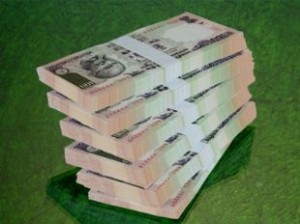RBI keeps key rates unchanged: Time to invest in bank deposits?
 The Reserve Bank of India (RBI) has kept the key rates unchanged in the monetary policy review announced today. Now the cash reserve ratio (CRR) of scheduled banks is unchanged at 4.25% per cent, repo rate at 8% and the reverse repo rate at 7%. In the past two policy reviews, the RBI cut the CRR by 0.25%.
The Reserve Bank of India (RBI) has kept the key rates unchanged in the monetary policy review announced today. Now the cash reserve ratio (CRR) of scheduled banks is unchanged at 4.25% per cent, repo rate at 8% and the reverse repo rate at 7%. In the past two policy reviews, the RBI cut the CRR by 0.25%.
However, this time with the key rates being unchanged, there may not be an immediate fall in the interest rates, say experts. This may not be the best news for borrowers, however, investors have every reason to cheer.
Investors who have missed the bus of high deposit rates still have a chance to lock into bank deposits to cash in on high interest rates. “Clearly, all macro economic factors indicate that the rates will go down in 2013. Hence, an investor should opt for a longer tenure fixed deposit if he/she is not clear about the time horizon for the investment,” adds Mukund Seshadri, certified financial planner and partner, MS Ventures Financial Planners.
“Company deposit rates have been lowered by 25 basis points in past two months anticipating a rate cut in the policy. However, banks have not lowered interest rates so far hence an investor should lock into bank deposits for the longest possible tenure,” says Pankaj Mathpal, Certified Financial Planner and Managing Director, Optima Money Managers. Rate of interest on bank fixed deposits have reduced by more than 100 basis points on one year fixed deposits.
“An investor may opt for a one year fixed deposit since the rates are 25 basis points higher than a fixed deposit of 1-3 years. Such investors don’t factor in the reinvestment risk which simply means they will be reinvesting that money after one year at a much lower rate,” Mathpal adds. It certainly makes sense to invest in a long-term FD with a tenure of five years. However, one cannot rule out the fact that FDs are best instruments to save for contingency requirements.
Even in such circumstances, you need not take the extreme step of breaking the FD before its maturity. “Ideally an investor can split the money into multiple FDs. For instance, if an individual wants to open a bank FD worth Rs 3 lakhs, it can be spilt into 2-3 FDs of different tenures.
In case of emergency the investor can break one FD and pay a penalty only on that amount. The other amount will be intact and accumulate interest over a longer tenure,” says KartikBSE 1.97 % Jhaveri, certified financial planner, Transcend Consulting.

Recent Comments